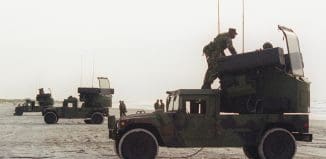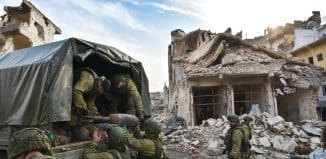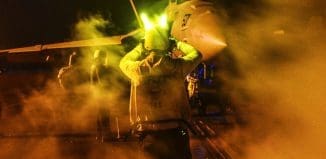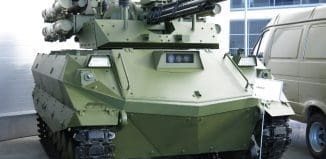Syria’s chemical program, inventory
This post is also available in:  עברית (Hebrew)
עברית (Hebrew)
The Syrian chemical weapons program began in the 1970s when the Hafez al-Assad regime purchased chemical munitions from the Soviet Union. This according to HLS News Wire.

In the 1980s, Syria launched a broad program of acquiring the materials, products, and knowledge necessary to set up an autonomous chemical weapons production capacity. In the nearly four decades of acquisition, research, development, and production, Syria has amassed what experts consider to be the world’s largest chemical weapons stockpile, consisting of about 1,000 tons of chemical agents and precursor chemicals.
The Syrian program has been shrouded in secrecy and official denial, but on the 23d of July 2012, a Syrian Foreign Affairs spokesperson confirmed that “these different weapons [chemical and non-conventional] are stockpiled and secured under the supervision of the armed forces.”
Syria is not party to the 1993 Convention on Chemical Weapons Ban, which 189 of the world’s 195 nations have signed and ratified.
Aram Nerguizian, a Senior Fellow with the Arleigh A. Burke Chair in Strategy at the Center for Strategic and International Studies (CSIS) in Washington, D.C., reports that the Syrian arsenal is particularly massive and diversified. It includes:
-
Several hundreds of tons of sulfur mustard, stockpiled in its final form
-
Several tens of tons of VX (VX is the most toxic among the known chemical warfare agents)
-
Several hundreds of tons of Sarin, representing the bulk of Syria’s arsenal
Sarin and VX are neurotoxic organophosphorous compounds. They are partly stocked in a binary manner, that is, as two distinct chemical products, called precursor chemicals, which are mixed just before use. Nerguizian notes that this technique and related processes are indications of a high level of know-how in chemical weapons technology by the Syrian regime.
Syrian scientists have also worked on nitrogen mustard, a first generation vesicant agent, as well as neurotoxic organophosphorous compounds with toxicity levels higher than Sarin.
iHLS – Israel Homeland Security
Means of delivery
Syria can deliver its chemical weapons by using several thousand launchers:
-
Scud C missiles — with a range of 500 km, capable of delivering sulfur mustard, Sarin, or VX.
-
Scud B missiles — capable of delivering sarin or VX at a 300 km range.
-
M600 missiles — with a range between 250 and 300 km. They too can deliver sulfur mustard, Sarin, or VX.
-
SS21 missiles – adapted to carry sulfur mustard, sarin, or VX for a limited range of about 70 km.
-
Air launched bombs with a payload of Sarin. Depending on the model, they can deliver between 100 and 300 liters of toxic agent.
-
Artillery rockets, particularly 302 and 320 mm, which can deliver sulfur mustard, Sarin or VX for a range of about 50 km and under.
Some missiles can deliver several hundred liters of toxic agents, and surveillance by the U.S. and Israeli satellites of test sites in Syria, and information obtained by other means, indicate that Syria was studying new dispersal mechanisms.
Nerguizian notes that the intelligence gathered about the Assad regime’s use of chemical weapons in the fifteen or so documented instances of their use against Sunni civilians, confirms the use by the regime of ammunitions carrying a smaller volume of chemical agents, adapted to more focused and local tactical use.
Nerguizian stresses that we cannot exclude the possibility that Syrian chemical weapons tests may also have been conducted with other categories of chemicals diverted from their civilian use and used at lethal doses.






























